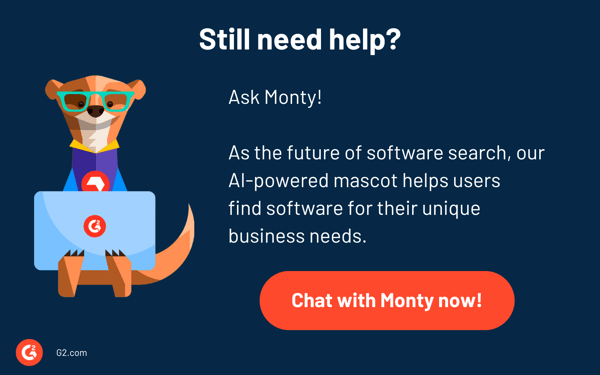December 20, 2024
 by Soundarya Jayaraman / December 20, 2024
by Soundarya Jayaraman / December 20, 2024

Tired of handing over your data to every platform you use?
Traditional methods of managing our identity data don’t do enough to keep us safe from security breaches, identity theft, and privacy invasions. Moreover, centralized identity and access management systems (IAM) offer users little control over our data.
Thankfully, decentralized identity puts you back in charge of your online identity.
Decentralized identity lets individuals control their own digital identities without relying on a specific centralized service provider, using digital wallet, and verifiable credentials from trusted credential issuers.
Built with distributed ledger technology (DLT) like blockchain, decentralized identity solutions form the cornerstones of Web3, the next evolution of the internet.
Keep reading to learn more about decentralized identity and why experts have faith that it’s the future of digital identity management.
Our personal information lives scattered across different platforms where we become "users.”
“Our digital bodies exist in fragmentation. I’m not an individual online; I’m a user.” ”
Frank Cardello
Executive Advisor, Decentralized Identity, Ping Identity.
As Frank Cardello of Ping Identity aptly states, “ When I manage an identity, it means I can show up and provide who I am in a millisecond. We can’t do that today. We have to re-establish trust in every interaction we embark on.” This creates a frustrating and insecure online experience.
Decentralized digital identity delivers a way to reclaim control and improve user experience. It minimizes the chance of data exposure in a world facing data breaches that affect over 353 million people a year.
Brandon-Summer Millers, Senior Market Research Analyst at G2, highlights the decentralized identity's cryptographic nature and the use of unique chain of blocks that are tamper-proof.
“(These) principles behind a decentralized digital identity make this technology incredibly secure.”
Brandon-Summer Millers
Senior Market Research Analyst, Cybersecurity, G2.
As you’ve experienced many times, you visit a site, and you’re asked to come up with a username and password. It’s the same for Facebook, TikTok, your bank, your job, or your aunt’s weekly newsletter for some reason. Often, you share personal details with accounts like these.
Sometimes, you have to provide personal documents to verify you are who you say you are. And then the site might have to use a third party to verify whether the ID you shared belongs to you.
All of these companies store your personal data in their systems. And herein lies one source of problems. The data you give becomes vulnerable to hacking, theft, or general abuse.
A decentralized identity system calls for a certified issuer, such as a government or organization, to issue digital certificates that verify your identity and other attributes like age, date of birth, educational qualifications, and licenses. Individuals like you, and I then store the credentials in a digital wallet.
When a service provider asks to verify your identity, you present the required information via a distributed ledger. With a decentralized ID, neither the issuer nor the verifier retains your information. You – and only you – have the power to allow access to it.
Three main components make decentralized identity possible:
A decentralized identifier is a unique reference code that serves as your online address. It leads to your DID document, which contains details about the public key encryption used to secure your personal credentials in a digital wallet. If you give someone access to your wallet’s public key, they can verify it.
Creating and storing your DID doc on the blockchain or any other DLT is called the DID method.
Because different blockchain technologies have different ways of storing data and transactions, developers have created and use several DID methods. The specific DID method is included within the decentralized identifier syntax itself.
You can share digital credentials from your wallet and prove your identity anywhere you go online. And remember, it doesn't reveal any personal details about you.
The digital certificates you store in your wallet are verifiable credentials. Issued by trusted entities like universities and governments, the certificates come with digital signatures secured by public key encryption and prove specific things about you, like your age or education. They protect your privacy.
You control which credentials you share when websites or apps request them.
DIDs are stored on a blockchain. Think of blockchain like a giant public record where everyone can see what's written, but no one can make changes. It makes everything super secure because
Since the decentralized identity solution has only recently emerged, developers employ different approaches with regard to how they are designed, created, and implemented. The World Wide Web Consortium (W3C) and the Decentralized Identity Foundation are the foremost organizations working on standardizing DID specifications to achieve effective interoperability.
Decentralized digital identity can also be used to verify the identity of an entity like an organization, computer application, or smart device.
Imagine you collect and store VCs of your driver's license, birth certificate, college diplomas and professional certificates from certified issuers in a secure identity wallet. This wallet is linked to a unique identifier, recorded on a secure blockchain.
Let’s say you’re applying for a new job and the business asks for your educational certificates. With DID, you present the link to a credential verifying your degree to the verifier aka the employer.
The company verifies the authenticity of your credentials by checking the issuer's digital signature against their public key on blockchain. Once you're selected, the employer can use the same DID for onboarding. This allows for a faster and more secure onboarding process, eliminating the need for manual verification and reducing paperwork.
Decentralized identity benefits both organizations and individuals by:
As mentioned earlier, the key difference between centralized and decentralized identity management lies in who controls your data and how it's stored. Here’s a breakdown of the difference between the two systems.
| Centralized Identity Management | Decentralized Identity Management | |
| Storage | Central database | Stored across various nodes in a distributed ledger |
| Control | Controlled by a central authority | Users have more control over their identities |
| User experience | Multiple accounts and passwords are needed; fragmented experience | Single digital identity used across services; simplified experience |
| Pros | Easier to manage, simplified audit and compliance, and centralized policies | Enhanced security, reduced single point of failure, increased user privacy |
| Cons | Single point of failure, high-value target for attackers, less user control | More complex to manage, evolving standards, potential interoperability issues. |
People often confuse decentralized identity. self-sovereign identity (SSI), and federated identity. While all three deal with digital identity management, they distinguish themselves like so:
.png?width=600&height=333&name=decentralized%20vs%20federatec%20vs%20sso%20(1).png)
A decentralized identity finds application anywhere a secure digital ID is needed. Here are some examples across different sectors:
Trust is everything in finance and decentralized identity gets used for numerous areas in this field, from opening bank accounts to recording credit scores. DID provides a secure, verifiable way to conduct know-your-customer (KYC) and anti-money laundering (AML) checks. This is crucial for traditional finance and even more so for emerging decentralized finance (DeFi) as part of the ongoing fintech movement.
DID can securely store your academic certificates and anyone who needs to can instantly verify authenticity without contacting the issuing institution. This comes in handy if, for instance, you move abroad for higher studies or a job, or even if your institution closes.
Blockcerts, started by MIT Media Lab, is an example of a blockchain-based certificate that can be shared, viewed, and verified.
DID can simplify access to essential services for citizens, immigrants and refugees. For example, the European Union is working on creating a digital identity for their citizens to access public and private services, both on and offline. Bhutan already rolled out a national identity system built on blockchain to all its citizens in 2023.
When the COVID-19 pandemic was raging in 2020, the World Health Organization, various governments, and identity providers worked on making “immunity passports,” or verifiable credentials about an individual’s vaccination status.
Today, the idea has expanded to use DID to store a person’s healthcare records, vaccination status, and other medical information. This can improve access to healthcare services and expedite insurance claims.
DID can track a product's journey through the supply chain, ensuring authenticity and ethical sourcing. Everledger, for example, uses digital ID on blockchain to track diamonds.
DID allows you to log in to websites and applications without revealing all your personal information. It eliminates the need for multiple usernames and passwords or reliance on third parties like Google or Facebook for logins.
As technology advances, decentralized identity will undoubtedly play a bigger role in identity and access management. However, significant challenges remain on the road to a truly decentralized ecosystem.
Despite the challenges, experts believe decentralized identity solutions will take center stage in the coming years.
“Traditional centralized ID systems remain the default identity approach...However, DID and SSI solutions will soon mature, proliferate, and become the standard identity framework.”
Mark Campbell
Chief Innovation Officer, Evotek.
Scott Perry, the founder of the Digital Governance Institute, notes that any technology that requires global adoption follows a pattern. “You have to prove the tech. You have to promote the tech. You have to get the relying parties or players involved to accept the tech.”
And the stakeholders are currently warming up. “We’ve gotten to a point where governments are accepting the technology, and standards are being built as we speak. We have organizations jockeying for position because there’s profit to be made. So all things are well positioned now for roll-out.”
When we finally reach critical mass for user adoption, DID will change how we interact in physical and digital spaces.
G2 shows 105 listings under our decentralized identity solutions category, with a mix of well-established technology companies like Microsoft and IBM, and startups like V-ID.
While G2 data suggests adoption across various industries, decentralized identity companies gain the most momentum in information technology and services, software, and network security. The financial services, accounting, and banking sectors follow closely.
With this in mind, let's explore the top 5 decentralized identity solutions in the market. These solutions offer innovative approaches to identity management.

The idea behind decentralized identity couldn’t be more simple: you control your identity data. Blockchain, cryptographic encryption, and new standards for SSI have given life to this concept. Governments and the private sector are showing clear interest in propelling this technology to widespread adoption. Decentralized identity isn't just the future; it's an opportunity to unlock a more secure and empowered online experience – right now!
Learn how identity governance makes your digital assets more secure.
Soundarya Jayaraman is a Content Marketing Specialist at G2, focusing on cybersecurity. Formerly a reporter, Soundarya now covers the evolving cybersecurity landscape, how it affects businesses and individuals, and how technology can help. You can find her extensive writings on cloud security and zero-day attacks. When not writing, you can find her painting or reading.
For many employees today, the workplace is no longer a fixed location.
 by Amber Steel
by Amber Steel
In my years writing about cybersecurity, I’ve learned one universal truth: no one wakes up...
 by Soundarya Jayaraman
by Soundarya Jayaraman
Software are like magic props of the corporate world.
 by Sagar Joshi
by Sagar Joshi
For many employees today, the workplace is no longer a fixed location.
 by Amber Steel
by Amber Steel
In my years writing about cybersecurity, I’ve learned one universal truth: no one wakes up...
 by Soundarya Jayaraman
by Soundarya Jayaraman


